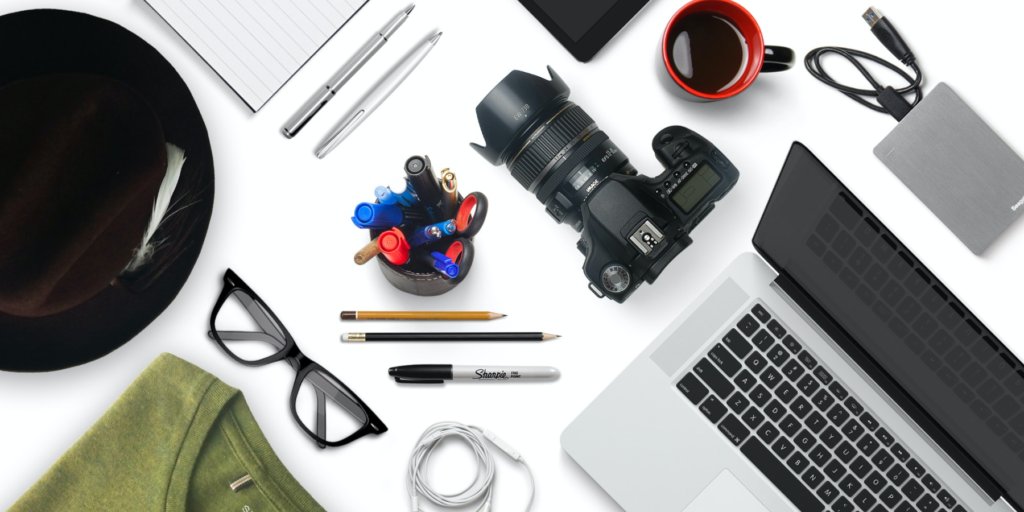
Whether you are a YouTuber, filmmaker, vlogger, animator, or just a creative hobbyist, sound effects can play a vital role when it comes to enhancing what ever experience you are trying to create or convey. While there is a huge amount of free sound effect content online to choose from, having your own unique sounds can set your project apart from everyone else’s. It adds a personal touch to your projects and opens up your creative scope. It can also give you a high level of satisfaction knowing that you created your own sounds and you are the only one who has the rights to use them.
In this comprehensive guide, we’ll explore the fun world of DIY sound effects. From the tools you’ll need, to the recording techniques, to helping you with ideas, we will cover everything you need to know to create your own awesome sound effects.
The Tools of the Trade
Before we dive into the how aspect of this article, let’s start off with the essential tools that you’ll need to be successful.
1. Get a good Microphone:
Obviously, the most important piece of equipment you will need is a good-quality microphone to capture sounds with clarity and precision. While professional studio microphones are ideal, even a smartphone or a portable recorder can get you started.
2. Find a Quiet Environment:
Choose a quiet location for your recordings to minimize background noise and ensure the best sound quality. It is a simple and rather easy thing to do, but will be one of the biggest reasons your sound effects will sound professional or not.

3. Props and Materials:
Depending on the sound effects you want to create, gather props and materials. This could include everyday items like pots and pans, instruments, or even DIY contraptions.
4. Audio Editing Software:
If you want to get that professional sound then you’ll need software like Audacity (free) or Adobe Audition (professional) for editing and refining your recordings.
Once you have a software that you like, you can cut out background noise, apply audio filters, compression, and even reverb to get exactly what effect you are aiming for.
With these tools in hand, let’s dive into the process of crafting your sound effects:
1. Sound Effect Ideas and Planning
The first step is to decide what sound effects you want to create. Consider the context of your project and brainstorm ideas. Some common categories of sound effects include:
- Nature Sounds: birds, rain, wind, or ocean waves.
- Human Actions: Footsteps, hand claps, or door slams.
- Mechanical Sounds: Engines, switches, or machinery.
- Fantasy and Sci-Fi: Laser blasts, magic spells, or alien languages.
- Ambient Noise: Café chatter, traffic, or crowd murmurs.
Once you have your list of desired sound effects, create a plan for how you will achieve each one. Think about the props and materials you’ll need, the locations suitable for recording, and any safety precautions required.

2. Recording Techniques
Using the proper recording techniques is critical for capturing high-quality sound effects and achieving what you have in mind. Here are some tips that may help you out:
- Positioning: Experiment with microphone placement to find the sweet spot for each sound. Close miking often works best, but consider distance for natural reverb or ambiance.
- Levels: Adjust input levels to avoid clipping (distortion) while ensuring that your recordings are loud enough to work with later.
- Multiple Takes: Always record multiple takes of each sound effect. This provides options during the editing phase and ensures you have backup recordings.
- Room Tone: Record a few seconds of “room tone” (background noise) in each recording location. This helps in post-production for noise reduction and transitions.

3. Limitless Possibilities
There are a huge amount of ways that you can design, record, edit and create your sound effects. Here are some creative techniques to that you can try:
- Foley Artistry: Foley artists recreate sounds by physically interacting with objects. For example, mimicking footsteps on gravel by walking on gravel.
- Layering: Combine multiple recordings to create complex sounds. Layering footsteps on different surfaces can make them sound more realistic.
- Pitch and Speed Alteration: Altering the pitch and speed of a recording can transform ordinary sounds into extraordinary ones. A slowed-down creaky door sound can become eerie and unsettling.
- DIY Instruments: Experiment with DIY instruments or sound-making devices. A rubber glove stretched over a bucket can mimic a drum.
4. Editing Your Sound Effects
Once you’ve recorded your sound effects, it’s time to open up your editing software and refine them. Here’s what you can do:
- Trim and Clean: Use your audio editing software to trim unwanted parts and clean up background noise.
- Layer and Mix: If you’ve recorded multiple takes or layers, mix them together to achieve the desired effect. Adjust volume levels and panning for a balanced sound.
- Effects and Processing: Apply audio effects like EQ, reverb, and compression to enhance and shape your sound effects.
- Export and Format: Save your sound effects in suitable formats (e.g., WAV or MP3) and consider creating multiple versions with varying lengths or variations.
5. Organizing Your Sound Effects Library
As you create more sound effects, organizing them becomes crucial for easy access. Consider doing these things to make your life just a little bit easier:
- Naming Conventions: Use descriptive names for your sound files. Include keywords related to the sound effect’s content and context.
- Folders and Categories: Organize your sound effects into folders or categories based on their type or intended use. This helps you quickly find what you need during a project.
- Metadata: Add metadata to your sound files, including descriptions, tags, and copyright information if applicable. This makes searching for specific sounds much more manageable.
6. Copyright and Licensing
If you plan to share or distribute your sound effects, consider their copyright and licensing status. If you’ve used any third-party materials, ensure you have the appropriate permissions or licenses.
7. Sharing and Using Your Sound Effects
Now that you’ve created your sound effects, you can start using them in your creative projects:
- Film and Video: Enhance your movies, animations, or YouTube videos with custom soundscapes.
- Podcasts: Use unique sound effects to add depth and immersion to your podcast episodes.
- Music Production: Incorporate original sound effects into your music compositions for added texture and atmosphere.
- Video Games: Create immersive audio environments for video game development.
Final Thoughts
Creating your own sound effects is a rewarding and fun creative process that allows you to add that special touch to your projects. With the right tools, techniques, and ideas you can create unique and captivating soundscapes that enhance the audiovisual experience for your audience. Regardless of what creative feat you are trying to achieve, it makes it easy for you stand out and it can bring a new level of joy and pride to your work.
Follow our blog and join our email list for more free resources, information, and tools to help you succeed in the creative world.
Jordan Soulman is a singer-songwriter and producer that has been in the must industry for over 7 years. He has released over 30 songs, gaining millions of streams across Spotify, YouTube, and other outlets.

Babbling Brook Sound Effect

Walking Next to a Stream Sound Effect

Cricket Sound Effect
High quality recording of a cricket chirping at night. 51 seconds long.
Preview this sound:





